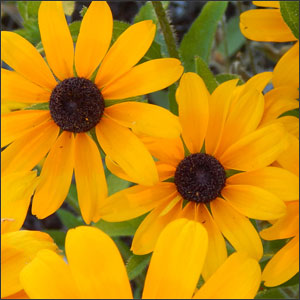How to Plant Black-eyed Susans

Did you know that Black-eyed Susans are actually wildflowers?
There are not many other flowers that represent the American golden-yellow beauty in an open field quite like the Black-eyed Susan. This flower is native to North America and is member of the sunflower family. Black-eyed Susans are great for attracting butterflies and look wonderful on a kitchen table.
On this beautiful fall Monday, we will be sharing with you how to plant these great American wildflowers.
When to Plant Black-eyed Susans
First we need to discuss when to plant. While right now Black-Eyed Susans can be found everywhere displaying their beauty, you wouldn’t want to plant them during the fall.
The best time to plant is when the temperatures of the soil has reached about 70 degrees and depending on where you live, that will probably be sometime from March to May. The germination takes anywhere from 7 to 30 days. So depending on when you plant, your Black-eyed Susans should flower anywhere from June to September and in some cases October.
Where to Plant Black-eyed Susans
The location on where you plant is almost as important as when you plant. According to The Old Farmers Almanac, Black-eyed Susans do best in well-drained soil and prefer full sun. However, this flower can tolerate partial sun and tough weather conditions.
Because Black-eyed Susans can really take over a space, you may want to consider planting them closer together, unless you want to create a boarder. This flower can grow anywhere from one to three feet and spread anywhere from twelve to eight-teen inches.
Our Last Tip
Our last tip is to install a direct-to-root watering system. The Rootstick by Rootwell, Inc. is a direct-to-root water system will provide the roots of your Black-eyed Susan with oxygen, water and the nutrients they need to flourish.
What are you working on in your garden this month?



